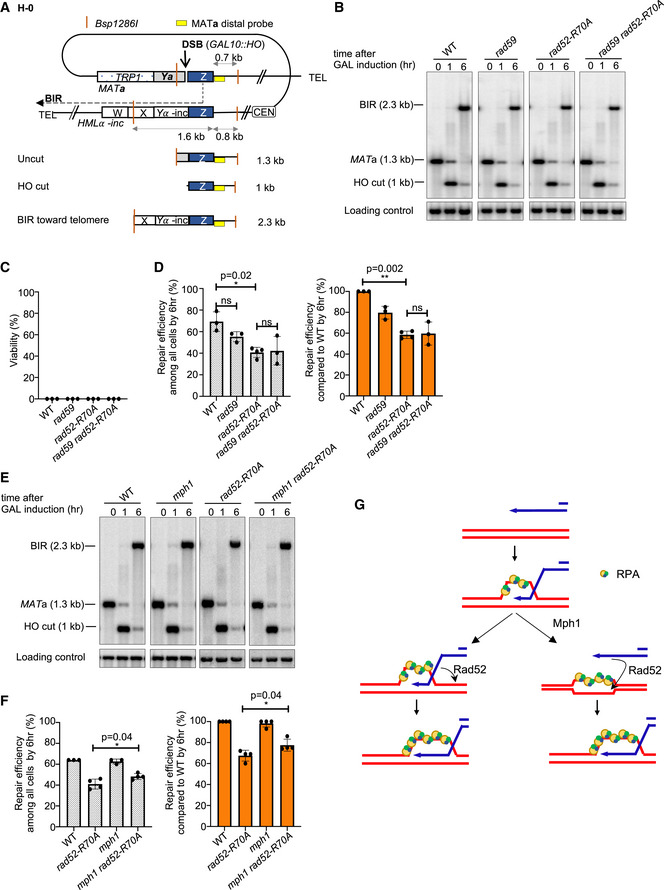Figure EV1. BIR efficiency is mildly decreased in annealing mutants.

- Schematic of the H‐0 BIR assay. DSB is induced at a modified MATa locus (Chr. III). Strand invasion occurs within the “Z” sequence (blue box) and DNA synthesis continues to the end of the chromosome.
- Representative Southern blots showing DSB repair products in WT, rad59Δ, rad52‐R70A, and rad59Δ rad52‐R70A cells. DNA was digested with Bsp1286I and probed with a MAT‐distal sequence (yellow box in panel A).
- Viability of indicated strains is shown (mean ± SD; n = 3).
- Repair efficiency compared to parental MATa at time 0 h (left) and repair efficiency of indicated mutants compared to WT by 6 h (right) (mean ± SD; n ≥ 3).
- Representative Southern blots showing BIR repair product in H‐0 system in WT and indicated mutant cells.
- Repair efficiency compared to parental MATa at time 0 h (left) and repair efficiency of indicated mutants compared to WT by 6 h (right) (mean ± SD; n ≥ 3).
- Model presenting the possible function of DNA binding/annealing domain of Rad52 in stabilizing the D‐loop. Rad52 stabilizes/extends D‐loop by three‐strand exchange (left) or Rad52 anneals a 3′ invading strand unwound from its template back to disrupted, but still RPA‐bound, D‐loop (right).
Data information: Welch’s unpaired t‐test was used to determine the P‐value in all panels. *P‐value 0.01 to 0.05, significant; **P‐value 0.001 to 0.01, very significant; ***P‐value 0.0001 to 0.001, extremely significant; ****P < 0.0001, extremely significant; P ≥ 0.05, not significant (ns).
